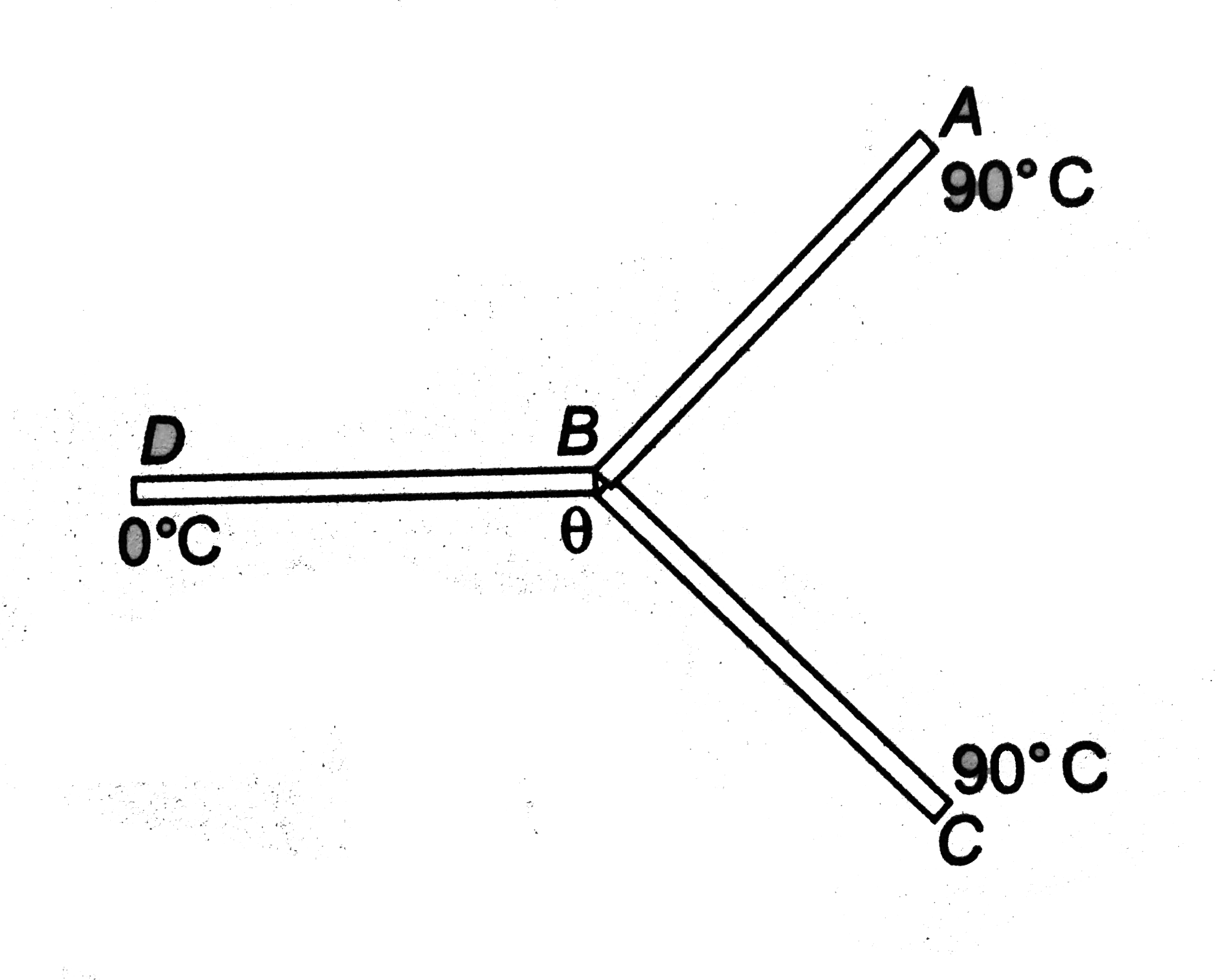Complete Solutions to Example of chapter CALORIMETRY & HEAT TRANSFER of Class 11 book with complete answers and questions
| Class 11 | PHYSICS |
| Chapter | CALORIMETRY & HEAT TRANSFER |
| DC PANDEY | Example |
| Number Of Questions | 14 |
| Academic Year | 2023-24 |
How much heat is required to convert 8.0 g of ice at `-15^@` to steam at `100^@`? (Given, `c_(ice) = 0.53 cal//g-^@C, L_f = 80 cal//g and L_v = 539 cal//g, `
and `c_(water) = 1 cal//g-^@C)` .06:44View SolutionIn the above problem if heat is supplied at a constant rate of `q= 10 cal//min`, then plot temperature versus time graph.
06:27View Solution10 g of water at `70^@C` is mixed with 5 g of water at `30^@C`. Find the temperature of the mixture in equilibrium. Specific heat of water is `1 cal//g-^@C`.
03:00View SolutionThe temperature of equal masses of three different liquids A,B and C are `12^@C, 19^@C and 28^@C` respectively. The temperature when A and B are mixed is `16^@C` and when B and C are mixed it is `23^@C`. What should be the temperature when A and C are mixed?
04:54View SolutionIn a container of negligible mass 30g of steam at `100^@C` is added to 200g of water that has a temperature of `40^@C` If no heat is lost to the surroundings, what is the final temperature of the system? Also find masses of water and steam in equilibrium. Take `L_v = 539 cal//g and c_(water) = 1 cal//g-^@C.`
04:03View SolutionIn a insulated vessel, 0.05 kg steam at 373 K and 0.45 kg of ice at 253 K are mixed. Find the final temperature of the mixture (in kelvin.)
Given, `L_(fusion) = 80 cal//g = 336 J//g`
`L_("vaporization") = 540 cal//g = 2268 J//g`
`s_(ice) = 2100 J//kg-K = 0.5 cal//g-K`
and `s_("water") = 4200 J//kg-K = 1cal//g-K` .07:37View SolutionAn ice cube of mass 0.1 kg at `0^@C` is placed in an isolated container which is at `227^@C`. The specific heat s of the container varies with temperature T according to the empirical relation `s=A+BT`, where `A= 100 cal//kg-K and B = 2xx (10^-2) cal//kg-K^2`. If the final temperature of the container is `27^@C`, determine the mass of the container.
(Latent heat of fusion for water = `8xx (10^4) cal//kg`, specific heat of water `=10^3 cal//kg-K`).07:16View SolutionIn which of the following process, convection does not take place primarily?
(a) Sea and land breeze
(b)Boiling of water
(c) Warming of glass of bulb due ot filament
(d) Heating air around a furnace01:52View SolutionA copper rod 2 m long has a circular cross-section of radius 1 cm. One end is kept at `100^@C` and the other at `0^@C`. The surface is insulated so that negligible heat is lost through the surface. In steady state, find
(a) the thermal resistance of the bar
(b) the thermal current H
(c) the temperature gradient `(dT)/(dx)` and
(d) the temperature at a distance 25 cm from the hot end.
Thermal conductivity of copper is 401 `W//m-K.`06:37View SolutionThree rods made of the same material and having the same cross-section have been joined as shown in the figure. Each rod is of the same length. The left and right ends are kept at `0^@C` and `90^@C`, respectively. The temperature of junction of the three rods will be
 02:35View Solution
02:35View SolutionFigure shows a copper rod joined to a steel rod. The rods have equal length and equal cross-sectional area. The free end of the copper rod is kept at `0^@C` and that of the steel rod is kept at `100^@C`. Find the temperature `theta` at the junction of the rods. Conductivity of copper
`=390 W//m-^@C` and that of steel `= 46 W//m-^@C`.
 .03:44View Solution
.03:44View SolutionA spherical black body with a radius of 12 cm radiates 450 W power at 500 K. If the radius were halved and the temperature doubled, the power radiated in watt would be
(a)225 (b)450
(c) 900 (d)180002:38View SolutionA cylinder of radius R made of a material of thermal conductivity `K_1` is surrounded by a cylindrical shell of inner radius R and outer radius 2R made of a material of thermal conductivity `K_2`. The two ends of the combined system are maintained at two different temperatures. There is no loss of heat across the cylindrical surface and the system is in steady state. The effective thermal conductivity of the system is
06:14View SolutionA body cools in 10 minutes from `60^@C` to `40^@C`. What will be its temperature after next 10 minutes? The temperature of the surroundings is `10^@C`.
05:17View Solution
Example questions and complete solutions for chapter CALORIMETRY & HEAT TRANSFER of DC PANDEY PHYSICS (HINGLISH) of Class 11
